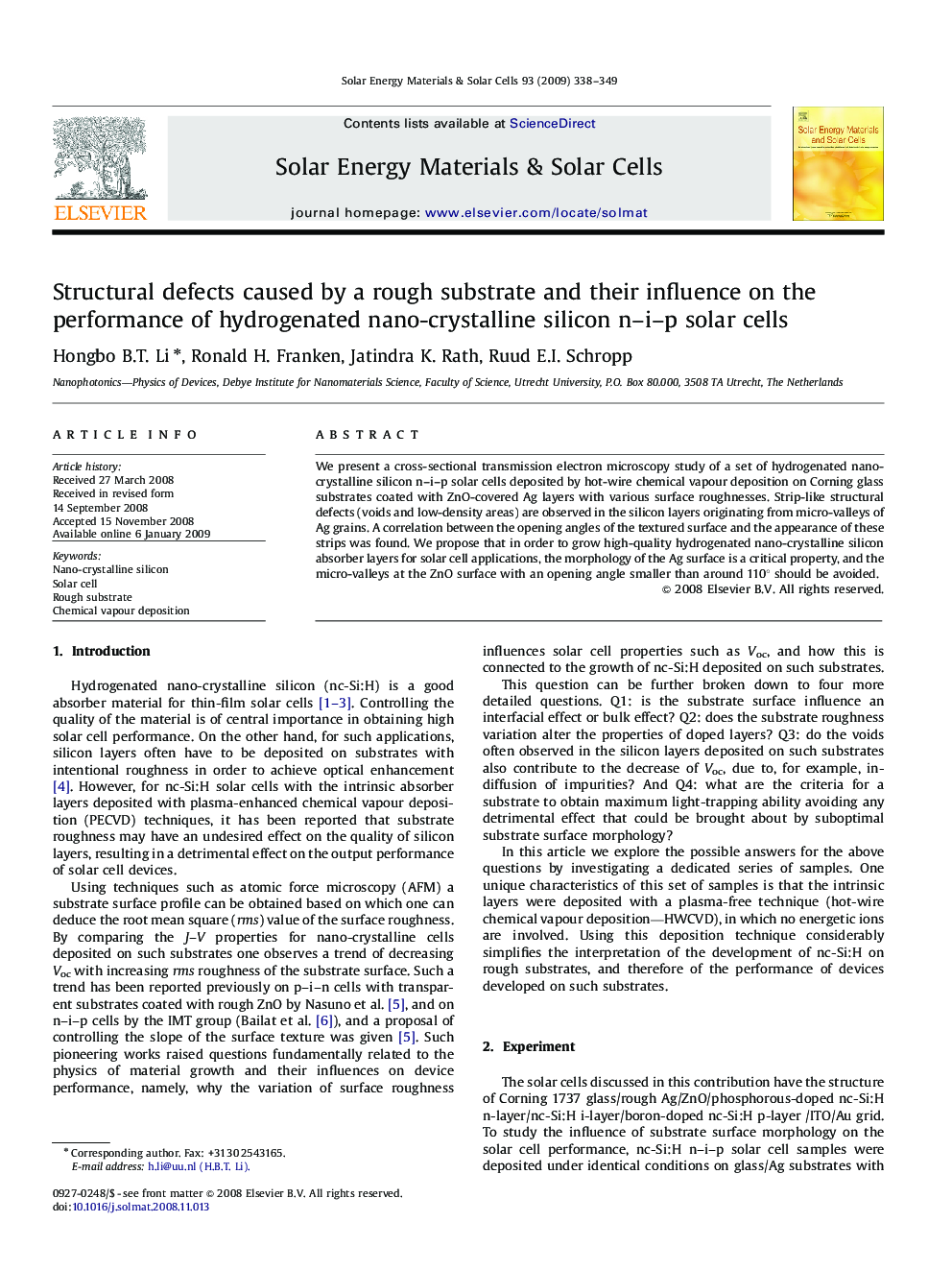| Article ID | Journal | Published Year | Pages | File Type |
|---|---|---|---|---|
| 80501 | Solar Energy Materials and Solar Cells | 2009 | 12 Pages |
We present a cross-sectional transmission electron microscopy study of a set of hydrogenated nano-crystalline silicon n–i–p solar cells deposited by hot-wire chemical vapour deposition on Corning glass substrates coated with ZnO-covered Ag layers with various surface roughnesses. Strip-like structural defects (voids and low-density areas) are observed in the silicon layers originating from micro-valleys of Ag grains. A correlation between the opening angles of the textured surface and the appearance of these strips was found. We propose that in order to grow high-quality hydrogenated nano-crystalline silicon absorber layers for solar cell applications, the morphology of the Ag surface is a critical property, and the micro-valleys at the ZnO surface with an opening angle smaller than around 110° should be avoided.
